- “Sunset” of the NOAA Raster ChartWhat is Happening In November of 2019, NOAA announced that they would be “Sun setting” traditional production of all raster chart products. In other words, production of traditional NOAA paper charts and all raster products will be completely ceased by January 2025. Since that time, NOAA has been slowly and surely moving toward that goal.… Read more: “Sunset” of the NOAA Raster Chart
- Calculating Wind Speed and Direction
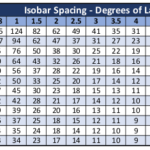 Calculating Wind from Isobars by Table Lookup There are at least two formulas I know of to estimate wind speed based on spacing of isobars on a surface analysis. Both are based on the relationship between pressure gradient (e.g. millibars per degree) and the latitude of interest. For those that are interested, a discussion of… Read more: Calculating Wind Speed and Direction
Calculating Wind from Isobars by Table Lookup There are at least two formulas I know of to estimate wind speed based on spacing of isobars on a surface analysis. Both are based on the relationship between pressure gradient (e.g. millibars per degree) and the latitude of interest. For those that are interested, a discussion of… Read more: Calculating Wind Speed and Direction - Create a Universal Plotting SheetThere may be times when a navigation chart showing contours along the coast and/or navigational hazards is not needed. This is generally the case with celestial navigation, however, you may also find times while piloting along a coast that this is the case. An example might be that you prefer to keep your DR and… Read more: Create a Universal Plotting Sheet
- Global Circulation
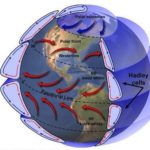 An Island in the sun Back to our island in the sun image. Although not apparent in the image, the rays of the sun do not directly heat the atmosphere. Instead, the sun’s rays heat the land, which in turn heats the air. It’s clear from this small-scale model the sun is the driving force… Read more: Global Circulation
An Island in the sun Back to our island in the sun image. Although not apparent in the image, the rays of the sun do not directly heat the atmosphere. Instead, the sun’s rays heat the land, which in turn heats the air. It’s clear from this small-scale model the sun is the driving force… Read more: Global Circulation - Marine Weather Intro
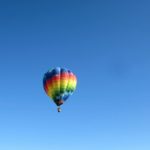 Knowledge of the weather is as crucial to today’s sailor as it was two hundred years ago. Fortunately, advances in technology have put weather forecasting capabilities within the grasp of the average sailor, who with the click of just a few buttons can bring up surface analysis maps which draw on the talents of some… Read more: Marine Weather Intro
Knowledge of the weather is as crucial to today’s sailor as it was two hundred years ago. Fortunately, advances in technology have put weather forecasting capabilities within the grasp of the average sailor, who with the click of just a few buttons can bring up surface analysis maps which draw on the talents of some… Read more: Marine Weather Intro - Navigation Exercises – Golden Gate to Pillar Point
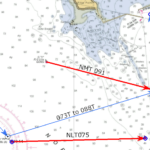 This navigation exercise requires Chart no. 18645 – Gulf of the Farallones Parallel rule Calculator Pencil Exercise 1 It is June 4, 2020 and you are headed to Pillar Point for the weekend. Slack before flood is at 0724, so you time your arrival at the bridge for 0730. You arrive at R”8” (37° 46.55′… Read more: Navigation Exercises – Golden Gate to Pillar Point
This navigation exercise requires Chart no. 18645 – Gulf of the Farallones Parallel rule Calculator Pencil Exercise 1 It is June 4, 2020 and you are headed to Pillar Point for the weekend. Slack before flood is at 0724, so you time your arrival at the bridge for 0730. You arrive at R”8” (37° 46.55′… Read more: Navigation Exercises – Golden Gate to Pillar Point - Navigation TrianglesPlotting Tool Options There is a wide array of tool options to assist you in navigation plotting. All have pluses to recommend them as your “go to” tool. Unfortunately, all also have cons that make them less desirable or more challenging to use. This tip is specifically how to use navigation protractor triangles (just call… Read more: Navigation Triangles
- Pillar Point to Drakes Bay
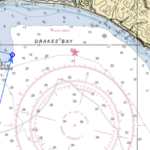 You just finished a wonderful dinner and are back on the boat. It’s Thursday evening, and decision time. Do you return home or head up to Drakes Bay for a day or two. Time isn’t an issue. You don’t have to be back until Sunday, or even later if you want. Weather forecast for the… Read more: Pillar Point to Drakes Bay
You just finished a wonderful dinner and are back on the boat. It’s Thursday evening, and decision time. Do you return home or head up to Drakes Bay for a day or two. Time isn’t an issue. You don’t have to be back until Sunday, or even later if you want. Weather forecast for the… Read more: Pillar Point to Drakes Bay - Pilot ChartsWhat Are Pilot Charts? Pilot Charts provide the navigator with averages. Averages concerning prevailing winds and currents, air and sea temperatures, wave heights, ice, visibility, barometric pressure, and weather conditions. There are five volumes of Pilot Charts, each being its own publication, and each covering a specific geographic region. Each publication is actually a compilation… Read more: Pilot Charts
- Pressure Systems
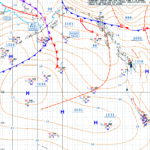 What is Wind The title of this topic might have been “What causes the wind.” Quite simply, wind is moving air. Air doesn’t seem like much, however, it has weight and it has substance, and is actually considered a fluid. This becomes apparent when air moves. While moving, you can see many of the same… Read more: Pressure Systems
What is Wind The title of this topic might have been “What causes the wind.” Quite simply, wind is moving air. Air doesn’t seem like much, however, it has weight and it has substance, and is actually considered a fluid. This becomes apparent when air moves. While moving, you can see many of the same… Read more: Pressure Systems - Rose’s Intro to NavigationFinding Latitude and Longitude Lines of latitude run east and west (across the chart). Lines of longitude run north and south (up and down). Degrees of Latitude Zero degrees of latitude is known as the equator. Latitude goes from zero degrees to 90 degrees north and south of the equator. As can be seen in… Read more: Rose’s Intro to Navigation
